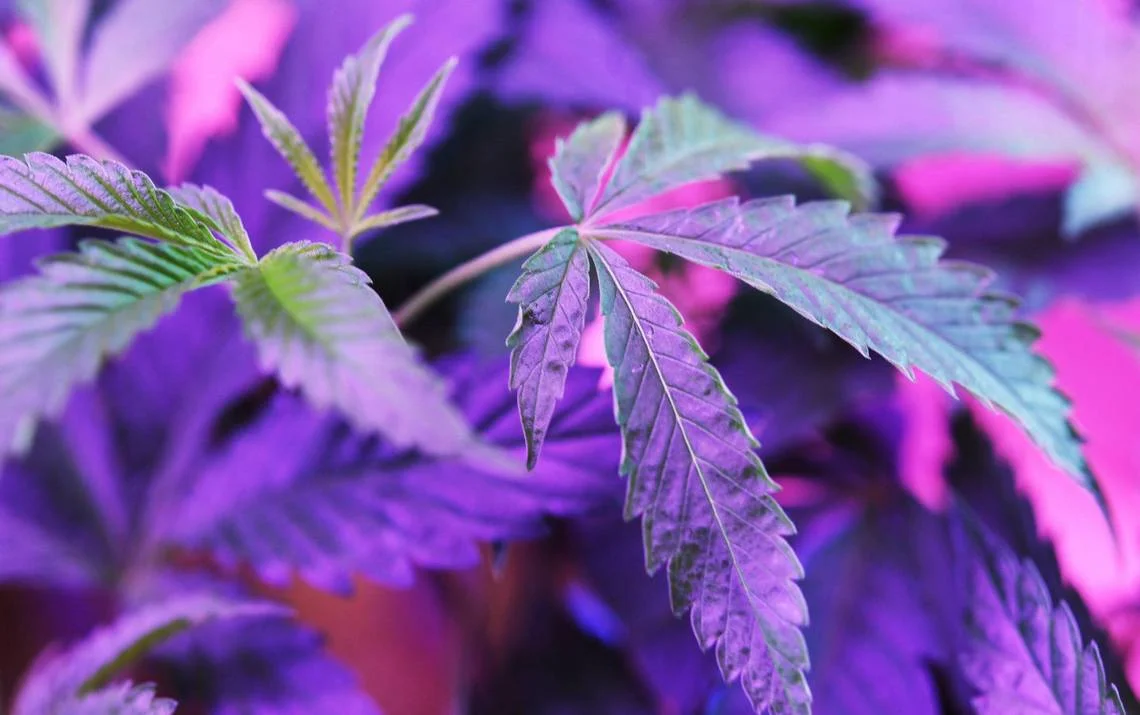
In the vast and varied world of cannabis, understanding the nuances between indica, sativa, and hybrid cultivars holds significant importance for enthusiasts, consumers, and cultivators alike. Identifying whether a plant is indica or sativa goes beyond mere curiosity; it serves as a fundamental cornerstone for tailoring cannabis experiences to desired effects and preferences.
Indica and sativa plants differ not only in their physical characteristics but also in the effects they produce when consumed. Indicas are typically associated with relaxing, sedating effects, making them popular choices for evening or nighttime use. On the other hand, Sativas are renowned for their energizing, uplifting properties, often favoured during the day for creative pursuits or social activities. Understanding these distinctions empowers individuals to make informed decisions about the type of cannabis they consume, whether for medicinal or recreational purposes.
Additionally, hybrid cultivars, which blend traits of both indica and sativa strains, offer a diverse array of effects, appearances, and aromas, further emphasizing the need for a nuanced understanding of cannabis classification. By delving into the effects, appearance, and aroma of each type, enthusiasts can navigate the cannabis landscape with confidence, ensuring that their experiences align with their preferences and goals.
The classification of cannabis into indica, sativa, and hybrid cultivars is fundamental to understanding the diverse world of cannabis strains. Indica plants typically exhibit characteristics such as shorter stature, denser foliage, and broader leaves. These traits are thought to have developed as adaptations to harsher climates, primarily in regions like Afghanistan and Pakistan. In contrast, sativa plants are known for their taller stature, longer internodal spacing, and narrower leaves. Originating from equatorial regions such as Southeast Asia and Africa, sativas have evolved to thrive in warmer climates with longer growing seasons.
Historically, indica strains have been associated with sedating and relaxing effects, making them popular choices for evening or nighttime use. Conversely, sativas have been praised for their uplifting and energizing properties, often sought after for daytime consumption to enhance creativity, productivity, or social engagement. These distinctions in effects are believed to arise from differences in the cannabinoid and terpene profiles of indica and sativa strains.
Botanically, indica and sativa plants also differ in their growth patterns and chemical compositions. Indica varieties tend to produce higher levels of sedating cannabinoids such as THC and CBD, along with a unique blend of terpenes that contribute to their characteristic aroma and flavour. Sativa strains, on the other hand, may contain higher concentrations of uplifting cannabinoids like THC and terpenes that impart fruity, citrusy, or spicy aromas.

The emergence of hybrid strains represents a blending of these distinct lineages, resulting in plants that exhibit a combination of indica and sativa traits. Hybridization allows breeders to selectively cross different strains to create offspring with desired characteristics. This process can involve enhancing potency, refining flavour profiles, or targeting specific effects such as pain relief or appetite stimulation. As a result, hybrid cultivars offer a wide range of effects, appearances, and aromas that cater to the diverse preferences of consumers.
In the dynamic landscape of the cannabis industry, hybridization continues to play a pivotal role in innovation and strain development. With advances in breeding techniques and a growing understanding of cannabis genetics, breeders can create new and exciting hybrids that push the boundaries of what cannabis can offer. Whether seeking therapeutic relief, recreational enjoyment, or simply exploring the myriad possibilities of cannabis, consumers have an ever-expanding array of hybrid cultivars to choose from, ensuring that there’s something to suit every taste and preference.
Identifying indica cannabis plants often begins with their distinct physical characteristics. Indicas typically display a shorter and more compact stature compared to sativas, with densely packed foliage and broader leaves. These traits are a result of their adaptation to harsher climates, where shorter plants with broad leaves can efficiently capture sunlight and conserve moisture. Indica plants also tend to have a higher bud-to-leaf ratio, with dense, resinous flowers clustered along their stems.
In addition to their physical appearance, indica strains are renowned for their characteristic aroma profile. Indicas often emit a pungent scent that is commonly described as musky, earthy, or skunky. These aromas arise from a combination of terpenes, aromatic compounds found in cannabis plants, which contribute to their distinct smell and flavour. The earthy and musky notes of indica strains can evoke feelings of nostalgia and relaxation, further enhancing the overall cannabis experience.
Beyond their appearance and aroma, indica strains are prized for their unique effects on the mind and body. Consuming indica cannabis typically induces a sense of deep relaxation and sedation, making them ideal choices for unwinding after a long day or promoting restful sleep. Indicas are also valued for their analgesic properties, offering relief from pain and muscle tension. Additionally, many individuals find that indica strains effectively alleviate symptoms of insomnia, helping them achieve a more restful and rejuvenating night’s sleep. Overall, the combination of physical traits, aroma profile, and therapeutic effects makes identifying indica cannabis plants a rewarding endeavour for enthusiasts seeking relaxation, pain relief, and tranquility.
Identifying sativa cannabis plants involves recognizing their distinctive physical traits, which contrast with those of indica varieties. Sativa plants typically exhibit a taller and more slender stature compared to their indica counterparts, with elongated branches and narrower leaves. This morphology reflects their adaptation to equatorial climates, where sativas thrive in environments with ample sunlight and longer growing seasons. The taller height and elongated branches of sativa plants allow them to reach for sunlight and maximize their exposure to light, resulting in vigorous growth and larger yields.
In addition to their physical appearance, sativa strains are characterized by their unique aroma profile. Sativas often emit fragrances that are described as fruity, floral, or spicy, with hints of citrus, pine, and tropical fruits. These aromas are attributed to the presence of specific terpenes, aromatic compounds found in cannabis plants, which contribute to their distinct smell and flavour. The fruity and floral notes of sativa strains can evoke feelings of freshness and invigoration, enhancing the overall cannabis experience.

Beyond their appearance and aroma, sativa strains are renowned for their uplifting and energizing effects on the mind and body. Consuming sativa cannabis typically induces a sense of euphoria and mental clarity, promoting creativity, focus, and sociability. Sativas are often favoured for daytime use, as they provide a burst of energy and motivation without causing sedation or lethargy. Many individuals find that sativa strains enhance mood and productivity, making them ideal choices for engaging in creative pursuits, social activities, or outdoor adventures. Overall, the combination of physical traits, aroma profile, and therapeutic effects makes identifying sativa cannabis plants a rewarding endeavor for enthusiasts seeking inspiration, upliftment, and vitality.
Recognizing hybrid cannabis plants involves understanding their unique nature as a blend of both indica and sativa strains. Hybrids are created through intentional crossbreeding, where breeders selectively combine different cannabis varieties to achieve desired traits. By blending the genetic characteristics of indica and sativa strains, hybrids offer a diverse array of effects, appearances, and aromas that cater to a wide range of consumer preferences. This blending of traits allows hybrid cultivars to inherit the best qualities of both parent strains, resulting in offspring that may exhibit a balance of relaxation and upliftment, depending on the specific genetics involved.
One of the most intriguing aspects of hybrid cannabis plants is the diversity they offer in terms of effects, appearances, and aromas. Hybrid cultivars can vary widely in their cannabinoid and terpene profiles, leading to a spectrum of experiences that may range from deeply relaxing to creatively stimulating. Additionally, hybrids may display a variety of physical traits, with some leaning more towards the indica side with shorter stature and broader leaves, while others exhibit sativa-like characteristics such as taller height and narrower leaves. Similarly, the aroma profiles of hybrid strains can encompass a wide range of scents, blending fruity, floral, earthy, and spicy notes in unique and complex combinations.
Understanding the characteristics of individual hybrid strains is crucial for tailoring cannabis experiences to one’s preferences and needs. With so much variability among hybrid cultivars, consumers must take the time to research and experiment with different strains to find ones that align with their desired effects and aromas. By understanding the unique attributes of each hybrid strain, consumers can make more informed choices about which products to consume, whether seeking relaxation, creativity, pain relief, or other specific effects. This personalized approach to cannabis consumption ensures that individuals can maximize the benefits of hybrid cultivars while enjoying a tailored and satisfying experience each time they indulge.
Visual identification plays a pivotal role in distinguishing between indica and sativa cannabis plants due to their distinct physical characteristics. When examining the leaves, indica plants typically display broad leaves with shorter, wider leaflets, whereas sativa plants showcase narrow leaves with longer, thinner leaflets. This contrast in leaf morphology is a result of their genetic makeup and environmental adaptations. Additionally, indica plants tend to exhibit denser foliage, giving them a bushier appearance, while sativas often present with a more elongated growth pattern and sparse foliage, contributing to their taller stature.
Another key visual cue for identification is bud structure. Indica buds are known for their dense and compact nature, forming tight clusters along the stem. These buds often have a uniform shape and tightly packed calyxes, resulting in a robust appearance. In contrast, sativa buds are typically looser and more elongated, with a spiral or elongated shape. These buds may have a more airy texture and exhibit less density compared to indica buds.

Utilizing visual aids such as images or diagrams can greatly assist in identifying these visual cues. Clear illustrations highlighting the differences in leaf shape, bud structure, and overall appearance between indica and sativa cannabis plants can serve as valuable reference points for enthusiasts and cultivators alike. By honing their visual identification skills and familiarizing themselves with these distinguishing features, individuals can confidently discern between indica and sativa plants, gaining a deeper appreciation for the diverse array of cannabis cultivars available.
Aroma identification is a vital aspect of distinguishing between indica and sativa cannabis strains, as each possesses unique olfactory characteristics. Indica strains often emit aromas that are rich, earthy, and musky, with undertones of spice or skunkiness. These scents evoke a sense of relaxation and tranquility, reflecting the sedating effects typically associated with indica varieties. On the other hand, sativa strains are characterized by their bright, uplifting aromas, which may include notes of citrus, tropical fruits, or floral undertones. These fragrances impart a feeling of energy and euphoria, aligning with the stimulating effects commonly attributed to sativa cultivars.
Recognizing these aromas in dried flowers or during cultivation requires keen observation and olfactory sensitivity. When examining dried cannabis flowers, take note of the predominant scents that emanate from the buds. Indica strains often have a deep, dank aroma reminiscent of damp soil or forest floor, with hints of spice or sweetness. Sativa strains, on the other hand, tend to exude a more pungent and fruity scent, reminiscent of citrus fruits, pine, or tropical flowers. During cultivation, pay attention to the aromas that develop as the plants mature, as these can provide valuable insights into their genetic lineage and potential effects.
To enhance aroma detection skills, practice and experience are key. Spend time familiarizing yourself with the unique scents associated with different cannabis strains, sampling a variety of cultivars to broaden your olfactory palette. Engage in blind smell tests or aroma profiling exercises to sharpen your ability to discern subtle nuances in fragrance. Additionally, consider keeping a scent journal to document your observations and track the aromas of different strains over time. With patience and dedication, you can develop a refined sense of smell that enables you to accurately identify indica and sativa strains based on their distinctive aromas, enhancing your overall cannabis experience.
Identifying the effects of indica and sativa cannabis strains involves understanding how their unique characteristics manifest in users. Indica strains typically induce a sense of relaxation and sedation, often described as a “body high.” Users may experience a deepening of physical sensations, muscle relaxation, and relief from pain or insomnia. These effects are attributed to indica’s higher concentrations of sedating cannabinoids such as THC and CBD, as well as specific terpenes that contribute to its calming properties.
Conversely, sativa strains are known for their uplifting and energizing effects, often referred to as a “head high.” Users may experience heightened creativity, euphoria, and increased sociability, making sativas popular choices for daytime use or social gatherings. These effects stem from sativa’s higher levels of uplifting cannabinoids like THC and terpenes that promote alertness and mental clarity.
It’s important to recognize that individual variation plays a significant role in how cannabis affects each person. Factors such as tolerance, metabolism, and unique biochemistry can influence the intensity and duration of cannabis effects. Additionally, the same strain may produce different effects in different individuals, highlighting the importance of personal experimentation. By trying a variety of indica and sativa strains and paying attention to how each one affects you personally, you can better understand your own preferences and tolerance levels.
When identifying desired effects based on strain characteristics, consider factors such as cannabinoid content, terpene profile, and anecdotal experiences from other users. For example, if you’re seeking relaxation and pain relief, look for indica strains with high levels of THC and myrcene, a terpene known for its sedative effects. On the other hand, if you’re looking for a mood boost and enhanced creativity, opt for sativa strains with higher concentrations of THC and terpenes like limonene or pinene, which are associated with uplifting and energizing effects. By carefully selecting strains that align with your desired effects and preferences, you can enhance your cannabis experience and maximize the benefits of this versatile plant.
In conclusion, identifying indica and sativa cannabis plants is a multifaceted process that involves recognizing their unique physical characteristics, aroma profiles, and effects. Indica plants are characterized by shorter stature, broader leaves, and earthy, musky aromas, while sativa plants tend to be taller with narrower leaves and emit fruity, floral scents.
Understanding these differences is crucial for tailoring cannabis experiences to desired effects, whether seeking relaxation and pain relief with indica strains or upliftment and creativity with sativas. It’s important for readers to deepen their knowledge of cannabis through continued observation and exploration. By experimenting with different strains and paying attention to how each one affects them personally, individuals can gain insight into their own preferences and tolerance levels, ultimately enhancing their cannabis experience.
Furthermore, understanding cannabis classification is essential for making informed consumption choices. Whether for medicinal or recreational use, knowing the characteristics of indica, sativa, and hybrid cultivars empowers consumers to select products that align with their desired effects and enhance their overall cannabis experience. By staying informed and educated about the diverse array of cannabis strains available, individuals can make choices that best suit their needs and preferences, maximizing the benefits of this versatile and beneficial plant. Through ongoing learning and exploration, individuals can unlock the full potential of cannabis and its myriad therapeutic and recreational applications.
Order weed online in Winnipeg. Puff Wow makes it easy to buy Cannabis online with our secure checkout and fast delivery.
Winnipeg, Manitoba
Canada

